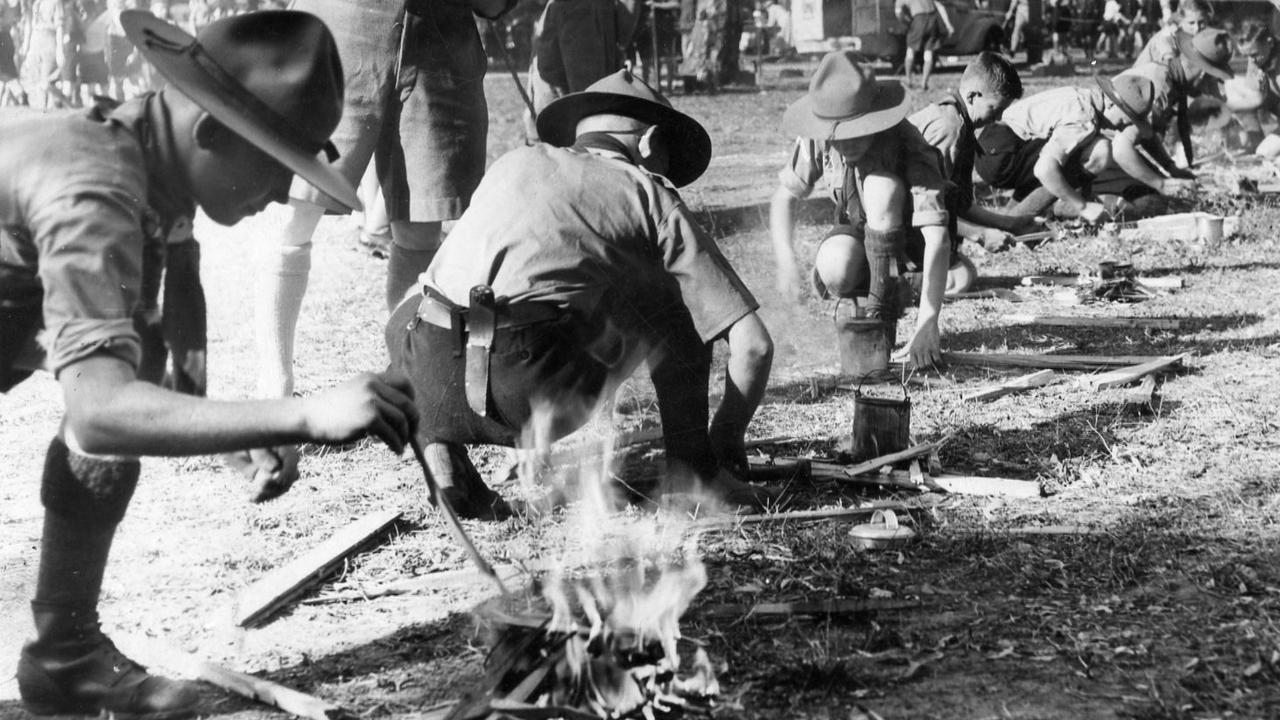Campfire blankets are used by scouts and their leaders to keep warm while they sit around a campfire. Most campfire blankets are made of ex-military woolen blankets, providing warmth and being less likely to catch fire from stray sparks. Scouts are encouraged to sew badges they have earned or collected from camps and Jamborees onto their blankets. Many blankets, like this one, are made into coats, adding functionality to their warmth.
The Scouting movement began in Australia in 1908 and reached Wingham in 1926. The 1st Troop of the Wingham Boy Scouts held its first-anniversary service in the Wingham Memorial Hall in April 1927. Today, the 1st Wingham Scout Group continues to meet in Wingham, offering programs for Joeys, Cubs, Scouts, and Venturers. Since 1981, girls have been part of Scouts NSW, with over a third of its members now being female.
This coat was made by Marion Bradley for her husband Ken in the 1960s. Ken served as a scout leader in Wingham from 1963 to 1971. The coat features various badges, including a large pennant from the Pan-Pacific Jamboree held in Sydney in 1952-53. The Jamboree hosted around 14,000 participants, including 2,000 guests, and included the first Grand Campfire where scout troops from different countries showcased their traditional dances. Ken Bradley was among the participants.
The term “jamboree” has been used since the first one was held in London in 1920, deliberately chosen by the founder Robert Baden-Powell. The word “jamboree” is considered an Americanism that dates back to the 1860s, referring to a joyful and noisy gathering. It is believed to originate from the combination of the words “jabber” (rapid, indistinct talk) and “shivaree” (noisy celebration).

